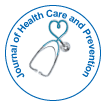Nuestro grupo organiza más de 3000 Series de conferencias Eventos cada año en EE. UU., Europa y América. Asia con el apoyo de 1.000 sociedades científicas más y publica más de 700 Acceso abierto Revistas que contienen más de 50.000 personalidades eminentes, científicos de renombre como miembros del consejo editorial.
Revistas de acceso abierto que ganan más lectores y citas
700 revistas y 15 000 000 de lectores Cada revista obtiene más de 25 000 lectores
Indexado en
- Google Académico
- publones
- ICMJE
Enlaces útiles
Revistas de acceso abierto
Comparte esta página
Abstracto
Response times to emergency medical needs: a retrospective analysis of quality indicators in the Belgrade region
Katarina Vojvodi?
Problem Statement: There are 7 emergency medical service (EMS) providers in the Belgrade region, Serbia, 6 at municipal level and one organized for 11 municipalities. In Serbia, EMS are staffed by medical personnel. EMS response time (RT) is a performance measure, but also a quality measure and a predictor of health outcomes. Emergency medical conditions are time-sensitive and should be treated as quickly as possible to achieve the best health outcomes for patients. The aim of this study is to assess the quality of prehospital EMS and RT for category 1 (life-threatening) emergency medical calls in Belgrade. Methodology: There are three quality indicators for RT for category 1 emergency calls: RT-I from receiving the call to informing the EMS team, RT II - from receiving the call to arrival at the scene, RT III - from arrival at the scene to discharge of the EMS team. A retrospective study of EMS quality indicators for RT I and RT II (2009–2018) and for RT III (2011–2018) was conducted. Findings: Retrospective analysis shows that mean RTI was 1.10 ± 0.21, mean RTII was 8.12 ± 0.47, and mean RTIII was 25.64 ± 3.46. There are no significant correlations between year, number of emergency calls, and RT (Pearson r and Spearman ρ > 0.05). RTIII has been reduced since 2016, with no significant correlations between RTI, RTII, and number of emergency calls. Conclusion and Significance: Response times play an important role in patient survival and full recovery after life-threatening medical events. A decrease in RT by just one minute may improve health outcomes. The results show that RTIII was shortened, representing a more efficient EMS, delivering interventions on time and increasing the turnover rate. RTI and RTII did not change significantly over time, indicating that further research should be conducted to suggest methods for time reduction.
Revistas por tema
- Agricultura y acuicultura
- Alimentación y Nutrición
- Bioinformática y biología de sistemas
- Bioquímica
- Ciencia de los Materiales
- Ciencia general
- Ciencias Ambientales
- Ciencias Clínicas
- Ciencias farmacéuticas
- Ciencias Médicas
- Ciencias Sociales y Políticas
- Ciencias Veterinarias
- Enfermería y atención sanitaria
- Física
- Genética y biología molecular
- Geología y Ciencias de la Tierra
- Ingeniería
- Inmunología y Microbiología
- Química
Revistas clínicas y médicas
- Anestesiología
- Biología Molecular
- Cardiología
- Cirugía
- Cuidado de la salud
- Dermatología
- Diabetes y Endocrinología
- Enfermedades infecciosas
- Enfermería
- Gastroenterología
- Genética
- Inmunología
- Investigación clínica
- Medicamento
- Microbiología
- Neurología
- Odontología
- Oftalmología
- Oncología
- Pediatría
- Toxicología

 English
English  Chinese
Chinese  Russian
Russian  German
German  French
French  Japanese
Japanese  Portuguese
Portuguese  Hindi
Hindi